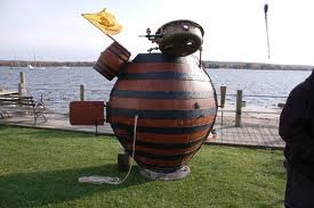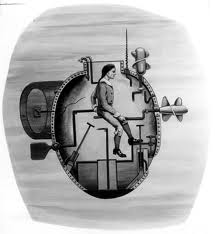DIET, LIFE CYCLE, LONGEVITY AND EVOLUTION
DietOblong Turtles are top-line predators in temperate wetlands. They are carnivorous, mainly eating small to medium sized fish and crustaceans which they hunt by day. Hatchlings eat tiny aquatic invertebrates and are a major factor in the control of mosquitoes by eating the wriggler larvae before they hatch. One hatchling can eat up to 70 wrigglers a day.
Turtles can locate their prey in low visibility water by echolocation. They do this by emitting a series of high frequency clicks similar to the Boto river dolphins. Turtles don’t have teeth but they are able to eat fish whole or broken into pieces by their sharp claws. Gut passage time is 84 hours (4-5 days depending on temperature). Reptiles don’t convert food energy to maintain body heat like we do; they get their heat from the environment. When temperatures are cold, turtles reduce their activities including eating and can fast for many months until the weather warms up enough for their bodily functions to return. Very hot conditions are also unfavourable for many activities so turtles aestivate (a deep sleep) in damp mud dens until the hot weather passes. In order to do this they need to store a lot of body fat by eating as much as possible when they are active. Large females have been known to attack swamp hens and eat smaller birds that come to the water’s edge to drink. The speed of the turtle’s strike as it lunges from the shallows is similar to that of a crocodile. Evolution200 million years in the making has resulted in one of the most cleverly complex creatures on earth – the not-so-humble turtle. Turtles evolved in the Triassic period, when dinosaurs were beginning to walk the earth, and have changed very little since then. They are highly adapted to their environment and have many special features including ballast tanks similar to a submarine, for regulating flotation, large lungs that are also used for flotation as well as breathing, a complex heart that can shunt blood away from the lungs completely when submerged for long periods, and a neck as long as its oblong shell with nostrils arranged like a snorkel. These little animals had their submarine skills, including sonar, perfected thousands of years ago. It’s taken mankind until the 20th century to develop modern submarines (at vast cost, utilising nuclear power and large
operating crews) which come close to replicating the natural abilities of a turtle. |
Life cycleTime period : Stage
Winter-Spring : Mating Spring-Summer : Nesting Autumn-Winter : incubation 26-41 weeks Winter-Spring : Hatching It can take up to a year from mating in Winter & Spring, to egg laying in early Spring – Summer, to hatching at the end of Winter. Egg laden females are no match for a car and are often killed each year while crossing roads to reach nesting sites above the water level of winter rains. Injuries are life threatening and many die from damage to internal organs. LongevityThe long lives of turtles are often proclaimed as fact, but reliable evidence is lacking. if an individual survives to adulthood, it will likely have a life span of two to three decade. (Encyclopedia Britannica.) Turtles are said to live as long as humans but there is no data to support this claim. But, because of their perceived long life span they symbolize longevity in some cultures, such as China.
Oblong turtles are difficult to age as there are no growth rings on the shell. A turtle may grow quickly when food is available, or slowly during bust cycles when food is scarce so size is no indication of age. Sexual maturity is around 5 years but females grow much larger than the males in order to store fat for egg yolk production and house the 2-16 elliptical eggs. |




